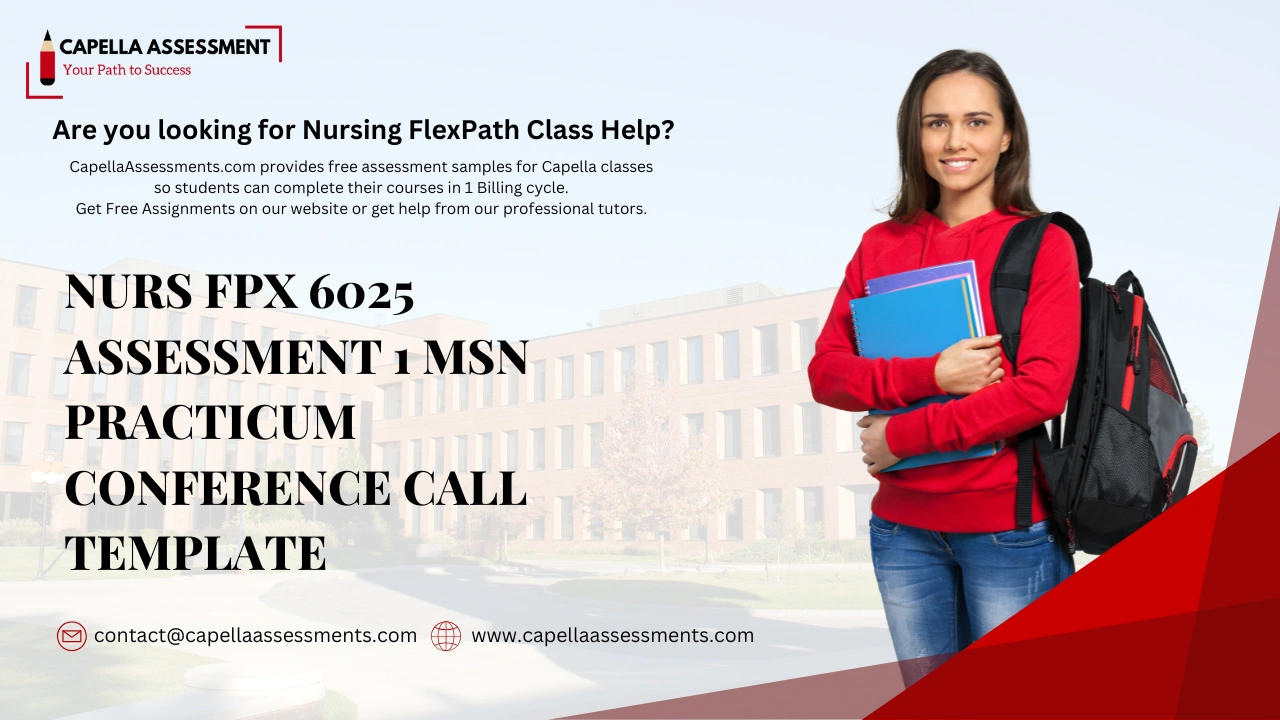NURS FPX 6025 Assessment 6 Practicum and MSN Reflection
NURS FPX 6025 Assessment 6 Practicum and MSN Reflection Name Capella university NURS-FPX 6025 MSN Practicum Prof. Name Date Technology Needs Assessment In healthcare, technology needs assessment is crucial for identifying gaps in patient care and ensuring that new technologies align with organizational goals (Tumma et al., 2022). For Grace Hospital, this assessment focuses on implementing a new telestroke technology to enhance stroke care services. This paper will explore the significance of the needs assessment in identifying clinical gaps, ensuring compliance with safety and privacy regulations, and addressing stakeholder concerns. Relevance and Importance of Needs Assessment Directing a needs assessment for implementing telestroke at Grace Hospital is essential for several reasons. First, it ensures that the chosen technology aligns with the hospital’s goals of improving patient outcomes, particularly for stroke patients who require immediate and specialized care. A needs assessment identifies specific gaps in current stroke care practices. It helps determine how telestroke technology can bridge these gaps, enhancing timely access to neurologists and potentially reducing mortality and disability rates (Kandimalla et al., 2021). The needs assessment will also help ensure positive outcomes by providing a comprehensive analysis of the hospital’s existing resources, workflows, and technological infrastructure. This thorough evaluation allows for a targeted and efficient implementation strategy, minimizing disruptions and maximizing the technology’s effectiveness. Additionally, it will highlight training needs for staff, ensuring they are well-prepared to use the new system effectively, which is crucial for patient safety and care quality (Babkair et al., 2023). Failure to conduct a needs assessment could result in several negative consequences for Grace Hospital. Without this foundational step, there is a risk of selecting technology that does not fit the hospital’s needs or integrate well with existing systems, leading to wasted resources and potential operational inefficiencies. Moreover, inadequate preparation could compromise patient care, jeopardize compliance with safety and regulatory standards, and ultimately damage the hospital’s reputation and financial stability (Bednar & Spiekermann, 2022). For Grace Hospital, the needs assessment assumes that there are current gaps in stroke care that can be addressed by telehealth technology. It also assumes that the hospital’s infrastructure and staff are capable of adapting to and integrating new technological solutions effectively (Babkair et al., 2023). Critical Issues in Nursing Care Addressed by TeleStroke Technology The primary concerns in nursing care at Grace Hospital that the new telestroke technology will address are prompt access to specialized stroke treatment and minimizing delays in providing care. Rapid intervention is crucial for stroke patients, and current limitations in on-site neurology expertise can lead to delayed diagnosis and treatment, negatively impacting patient outcomes. The telestroke technology will enable remote consultations with neurologists, ensuring quicker and more accurate assessments and interventions (Kandimalla et al., 2021). The technology will support clinical decision-making by providing real-time access to expert opinions and evidence-based practices, which can improve the overall quality of care. Leadership’s purchase decision will be strongly influenced by these issues, particularly the potential to enhance patient outcomes through faster diagnosis and treatment and the ability to aggregate data to monitor trends, such as treatment response times and recovery rates. This data can further guide improvements in stroke care protocols and ensure compliance with best practice guidelines (Babkair et al., 2023). While telestroke technology offers significant benefits, it is essential to consider potential challenges, such as ensuring reliable internet connectivity and addressing concerns about data security and patient privacy. Additionally, some staff can be resistant to adopting telestroke technology, necessitating comprehensive training and change management strategies to ensure successful implementation and widespread acceptance among healthcare providers (Guzik et al., 2021). Safety Requirements and Regulatory Considerations When applying telestroke technology at Grace Hospital, numerous care needs and regulatory concerns must be solved. First, the technology must comply with Health Insurance Portability and Accountability Act (HIPAA) regulations to make sure that patient data is securely transmitted and stored, safeguarding patient confidentiality and privacy (HHS.gov, 2022). Second, the technology must meet federal and state standards for reimbursement, such as the Centers for Medicare & Medicaid Services (CMS) strategies for telehealth services, which include criteria for coverage and billing practices (CMS.gov, 2023). Third, the technology should support meaningful use objectives by improving care coordination, enhancing patient engagement, and ensuring that clinical decisions are based on up-to-date and accurate information. Ensuring compliance with these requirements is critical for the telestroke’s effective integration into existing care processes (Bashir, 2020). To evaluate whether the telestroke technology meets safety and regulatory requirements at Grace Hospital, criteria should include verifying that the system adheres to HIPAA guidelines for data security and patient privacy through regular audits and security assessments. Additionally, compliance with CMS telehealth coverage criteria can be assessed by reviewing billing practices and reimbursement approvals. The technology’s contribution to meaningful use objectives can be evaluated by tracking improvements in care coordination and patient engagement through performance metrics and patient feedback (CMS.gov, 2023; HHS.gov, 2022). Confidentiality and Privacy Protections For the telestroke technology at Grace Hospital, ensuring patient confidentiality and privacy is paramount. The technology must incorporate robust data encryption features for both data at rest and in transit to protect Protected Health Information (PHI) from unauthorized access. Authentication and access panels should be applied to guarantee that only authorized workers can access patient data, and audit trails should be maintained to track access and modifications to sensitive information (Demaerschalk et al., 2022). Additionally, the system must comply with HIPAA regulations, which mandate secure handling of PHI and require the technology to undergo regular security risk assessments to identify and address vulnerabilities. Potential security risks include data breaches from cyberattacks, inadequate encryption leading to unauthorized access, and user errors due to improper handling of sensitive information. Addressing these risks involves stringent security protocols, continuous monitoring, and staff training on best practices for protecting patient data (Demaerschalk & Graham, 2024). A significant knowledge gap exists in understanding the comprehensive encryption methods required for both data at rest and in transit to fully meet HIPAA standards for telestroke technology (Demaerschalk & Graham, 2024). There is also a need






